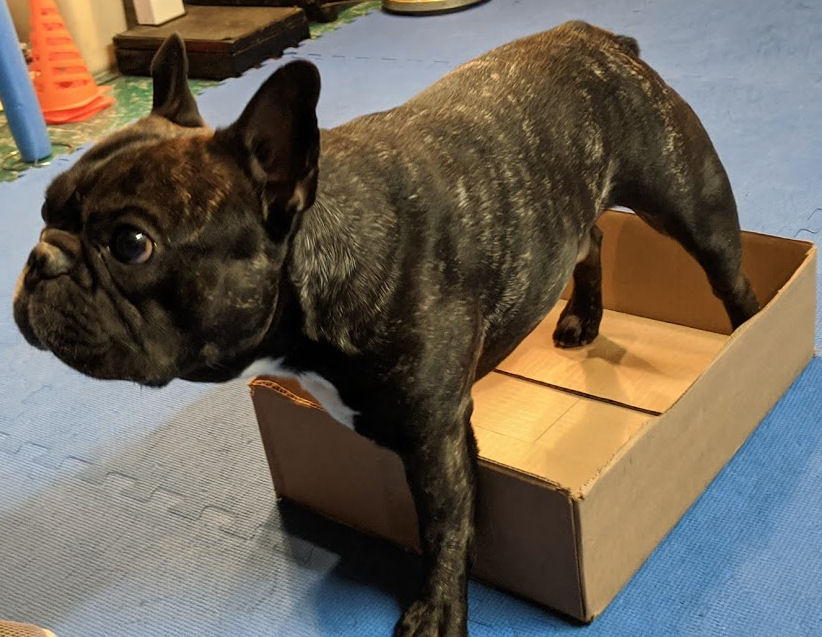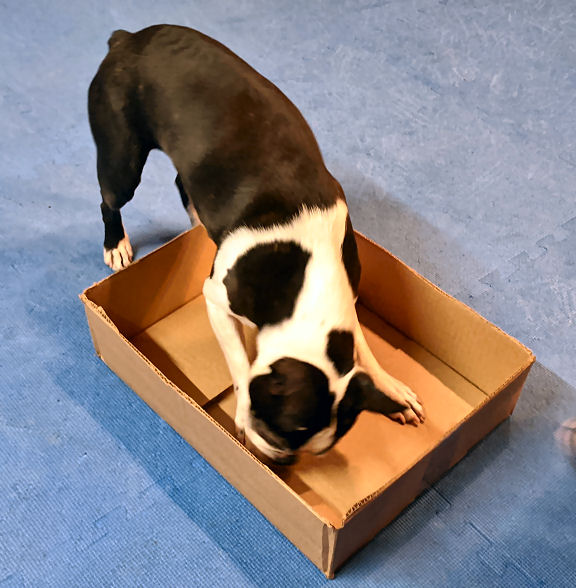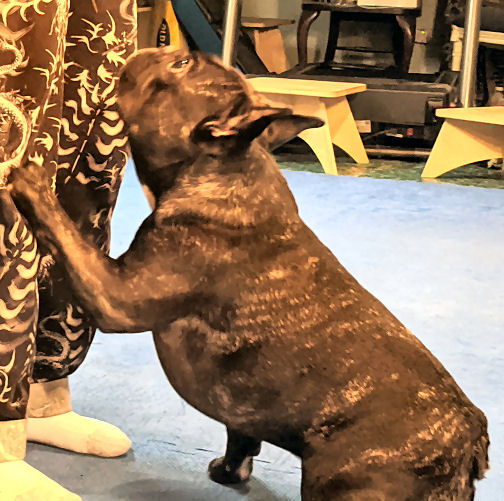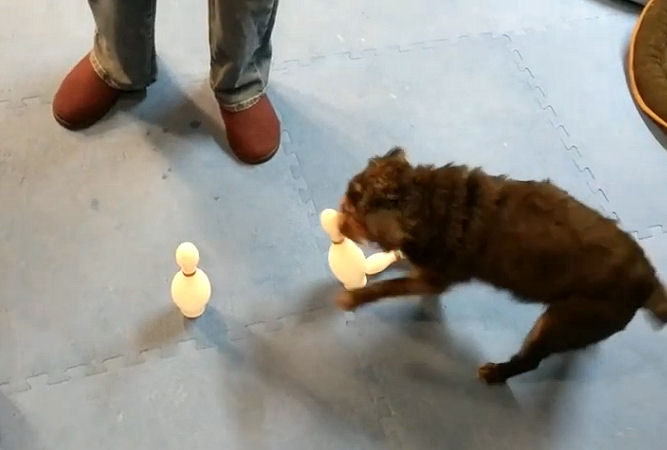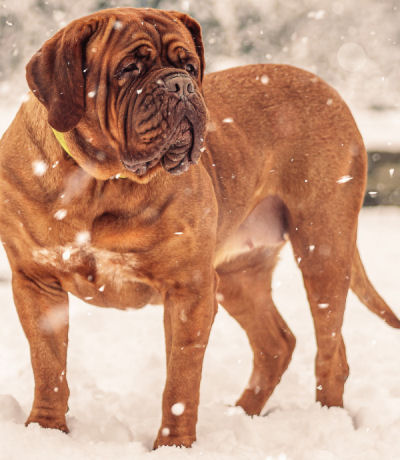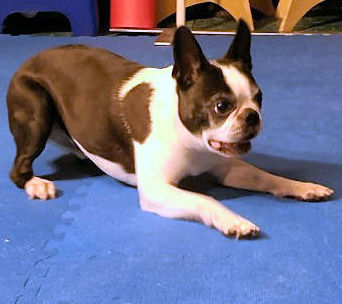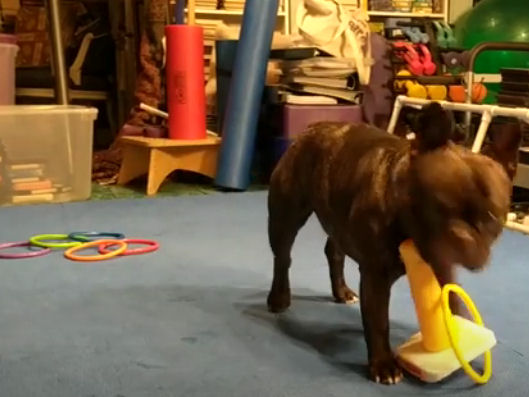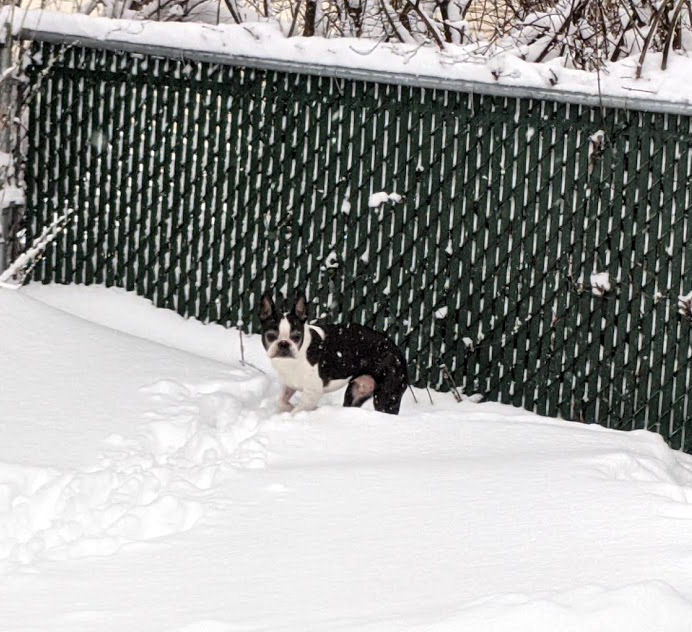The “Touch!” dog training game can be a pocket game you pull out and use any time you and your dog are together. It’s great when your dog is stressed, if you’re waiting at the vet’s office. Or if your dog is intently focused on something that’s none of his business, like that other dog on a walk.
To make this a go-to game, you and your dog must play it often. And your dog has to love it. Absolutely adore it. When your dog values playing this game more than any other stimulus, you can play it to keep your dog’s attention where you want it. That’s when it becomes one of the most useful tools in your dog-training toolbox.
Tools of the game
“Touch!” doesn’t require much stuff. Just you, your dog, and some treats. Really prime treats. Leftover steak kind of treats.
This may be a good place to talk about the “hierarchy” of treats. Dogs have preferences, just like people. You may adore fruit. Blueberries may be the fruit you reach for every time. Somebody else (Hope) may be allergic to blueberries and avoid them like the plague. She’d reach for the chocolate, instead.
We’ve talked before about putting together a “trail mix” of treats for dog training games. This should be a mix of high value (cheese), medium value (Cheerios), and low value (kibble) bits. The examples are our dogs’ particular preferences. You’ll know best what your dog’s favorites are and the tidbits she pushes away.
We know one person whose dog’s favorite thing in the world was shrimp. She went out of her way to get dried shrimp to use as training treats. We’ve also talked about Hope’s Dax, who adored celery. Most dogs love popcorn and you can certainly use air-popped popcorn in the mix.
When your dog never knows what the next treat will be, it keeps things fresh and exciting for the training games. Use your dog’s unique trail mix for most training games. Use the favorite for introducing a new game, especially one like “Touch!” that you mean to use often.
Getting started with Touch! Dog Training Game
The mechanics of a dog-training game like “Touch!” are simple, but not intuitive. Doing it this way gets the message across to your dog most clearly. Nobody’s watching – if you want to practice the moves before you try them out on your dog, go ahead.
Remember when you’re playing dog training games that you’re trying to communicate complex ideas to someone who doesn’t speak your language. And doesn’t have a common frame of reference. Your dog wants to play the games and have fun. Be as clear and confident as possible.
Have a bunch of treats in a bowl or small container near at hand, but out of your dog’s reach. If your dog has a tendency to wander away, or disengage when he/she doesn’t understand, put on his/her collar and leash and just let the leash drag on the floor.
Step 1: Put your hand out to the side, palm side facing your dog. Call your dog’s name. If your dog looks at your palm, touches your palm, interacts with your palm at all, take a treat with the other hand and hold it in the middle of your palm for your dog. You are feeding the treat from the open palm with the other hand.
You’re probably asking why you can’t just have a treat in the palm you want your dog to touch. And the answer is: because we’re not luring the dog to touch. We’re teaching the dog to decide to touch.
There may come a day when you need to get your dog’s attention but you don’t happen to have a treat handy. If the only way you’ve played the game is with a visible reward, your dog doesn’t know the right choice to make. He/she loves the lure, not the game.
Another important point: don’t reach out to your dog. Let your dog come to you. If you start reaching out, your dog’s natural instinct will be to back up. You don’t want that. Let your dog come to you.
Give it a name
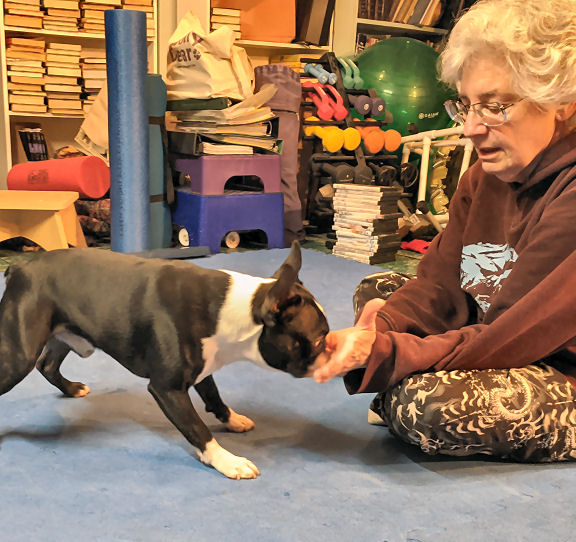
When your dog touches your palm, you can start calling the game “Touch!” As you’re giving the reward (with the other hand, all the time!), you can say “Good Touch!” “That’s Touch!” “What a good Touch!” As well as the game, you’re also teaching the name of the game.
Remember to only play for a two-minute session. You can play a couple times a day, but not for long. Since this is such a simple game, your dog should “know” it fairly reliably in a week or so.
Variations on a theme
Once you’ve established your palm as the target to touch for treats, you can change hands, even alternating once your dog understands. Don’t be surprised if your dog doesn’t “get” that it’s the same game when you change. Remember that dogs don’t generalize naturally – it’s a learned behavior. Just because your dog understands “Touch!” with your left palm doesn’t mean she’ll know it with your right, or with your mother’s palm, or anyone else’s.
You can play the Touch dog training game anywhere. Take the game outside, to the park, to the pet store. In particularly difficult environments be sure to reward heavily and not go too far too fast. If your dog is having difficulty at the park, go back to your own yard and practice more there.
Old reliable
The Touch dog training game is what we use to get our dog’s focus, break his attention from someplace it shouldn’t be, and pass time when we’re waiting. You can alternate palms, play sitting, standing, kneeling, running, walking, wherever. It’s also useful when you’re playing another game, like “Boxey” and need to take a break while you reset.
Transitioning from one dog training game to another is easy. The more games you and your dog know, the more fun you’ll have.

